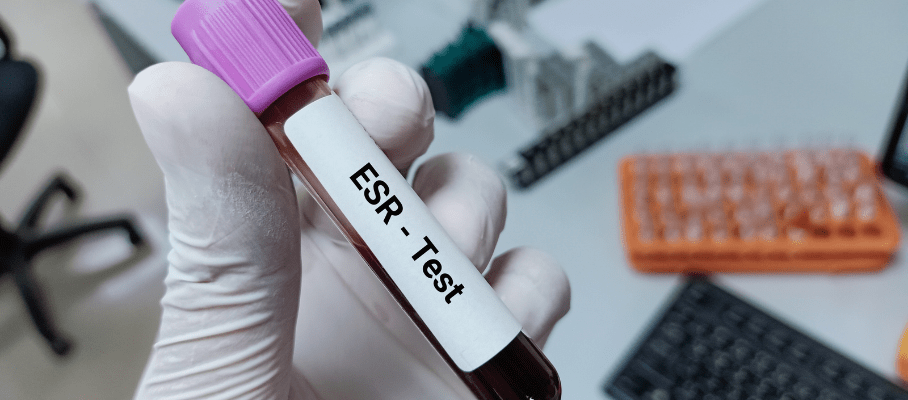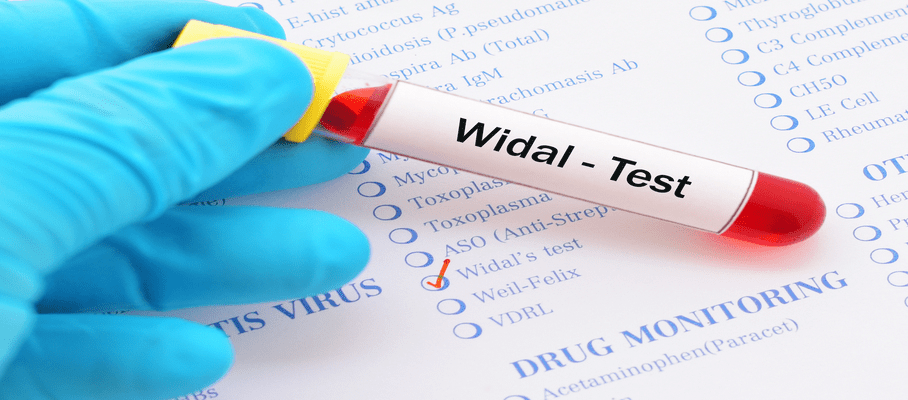Latest Blogs
Nuchal Translucency: What It Is and Why It Matters
What Is Nuchal Translucency? The term ‘nuchal translucency’ refers to the fluid-filled area within the foetal tissue which is present at the back of your baby's neck. An ultrasound in the first trimester checks this fluid to see if there is a risk for certain genetic issues. Remember that an NT scan is just a screening. It can suggest if more tests are needed but does not confirm any conditions. What Does the Nuchal Translucency Test For? The nuchal translucency scan is a prenatal screening procedure performed during the first trimester of pregnancy, typically between 11 and 13 weeks. It measures the fluid-filled space at the back of the foetus's neck, known as nuchal translucency. A high NT scan measurement may suggest the presence of Down syndrome (Trisomy 21), Patau syndrome (Trisomy 13), Edwards syndrome (Trisomy 18), or congenital heart issue. Along with a maternal blood test that checks specific pregnancy hormones, the nuchal translucency measurement helps assess the risk for certain genetic conditions. A thicker nuchal translucency measurement may indicate a higher risk of abnormalities, while a normal measurement indicates a lower risk. It's important to remember that the NT scan is a screening tool and not a definitive diagnosis. If the results show a higher risk, further tests like amniocentesis or chorionic villus sampling (CVS) may be suggested to confirm or rule out any conditions. When Is a Nuchal Translucency Scan Done? An NT scan is typically done between the 11th and 13th weeks of pregnancy when the foetus measures between 45 and 84 millimeters from the crown (top of the head) to the rump (bottom of the torso). Beyond the 14th week, the fluid at the back of the baby's neck naturally gets absorbed, making it difficult to measure. What Is a First-trimester Screening Test? A first-trimester screening test, often called combined sequential screening, helps evaluate the risk of congenital conditions. It combines blood tests with an NT scan, offering more accurate results than the NT scan alone. Who Should Get a Nuchal Translucency Screening? A nuchal translucency screening is optional for all pregnant individuals. However, individuals over 35 or with a family history of genetic conditions may be advised to consider this screening. Healthcare providers recommend this scan for those who are between their 11th and 13th weeks of pregnancy. How Is Nuchal Translucency Screening Done? A nuchal translucency scan involves using a handheld ultrasound device. The probe can be positioned either on your abdomen or inside your vagina, depending upon factors like: Gestational age Baby's position Mother's body shape During the NT scan, the sonographer applies some gel to your abdomen and moves the ultrasound wand over it. The scan usually doesn’t cause any discomfort. If a transvaginal probe is needed, you will receive clear instructions beforehand. How Are the Results of A Nuchal Translucency Test Calculated? The results of a nuchal translucency procedure is calculated by measuring the thickness of the fluid-filled space at the back of the foetus's neck, and is usually performed between 11 and 13 weeks of pregnancy. The measurement is further compared to an established nuchal scan normal range value, which generally indicates a normal NT measurement is under 3.0 millimeters. If the NT measurement falls within this nuchal translucency normal range, it suggests a lower risk for chromosomal abnormalities, such as Down syndrome. Conversely, a thicker measurement may indicate a higher risk, prompting further evaluation. To improve the accuracy, the NT measurement is often combined with maternal blood tests that check hormone levels, such as free beta-human chorionic gonadotropin and pregnancy-associated plasma protein-A. This combined approach provides a more comprehensive risk assessment for genetic conditions. The results are presented as probabilities, indicating the likelihood of abnormalities. For example, 1 in 1000 means low risk, while 1 in 150 means higher risk, which may lead to further testing. The nuchal scan normal range can vary slightly on the gestational age, usually between 1.8 and 2.35 mm for the 95th percentile. Using these population-specific reference ranges can optimise screening results by reducing false positive cases. How Accurate Is the Nuchal Translucency Test? The nuchal translucency procedure is not an outright diagnostic tool, but it’s a risk assessment measure. When performed between 11 and 13 weeks of gestation, the NT scan alone can detect approximately 75-80% of Down syndrome cases in foetuses of mothers aged 35 and older. However, when combined with a blood test as part of a first-trimester screening, this accuracy increases to about 85%. This combined test looks at maternal age, hormone levels in the mother's blood, and the nuchal translucency measurement to provide a better overall risk assessment. Being aware of these numbers can help you understand the nuchal scan normal range and interpret your results with more precision and less anxiety. Are There Any Risks to The Screening? The great news about a nuchal translucency scan is that it poses no direct harm to either the mother or the baby. The procedure involves a standard, non-invasive, and painless ultrasound that doesn’t involve any radiation exposure or needles, ensuring complete safety with no risk of miscarriage. However, what could potentially be stressful for parents-to-be are the results, specifically those indicating high-risk. It’s important to remember that an abnormal result doesn’t confirm a genetic disorder but it simply indicates an increased risk for one. What Does an Abnormal Nuchal Translucency Test Mean? A thicker nuchal area identified during a NT scan directly correlates with higher chances of chromosomal abnormalities in the foetus. Essentially, if your result falls outside nuchal scan normal range, it denotes 'high risk'. However, before panic sets in, it's important to remember that 'high risk' isn't a diagnosis. For example, among 100 women with a high-risk result, only about 5 would have babies with a chromosomal disorder. An abnormal test result can simply indicate the need for further diagnostic tests, such as Chorionic Villus Sampling (CVS) or Amniocentesis. Additionally, factors like maternal age and family history can influence how results are interpreted. It’s important to consult with a healthcare professional to understand a implications of an abnormal NT scan and to discuss potential follow-up testing options. Early detection helps with planning and managing any risks, making sure that both the mother and baby get the right care and support during the pregnancy. What Is the Normal Nuchal Translucency Measurement? Knowing what’s normal can help you understand your nuchal translucency scan results. The thickness of the nuchal fluid is usually considered normal if it measures less than 3.5 millimeters during weeks 11 to 13 of pregnancy. It's important to note that as the foetus grows week by week, and so does the nuchal translucency. Hence, your healthcare provider will consider both the NT measurement and gestational age to determine if it lies within the nuchal scan normal range. Does An Abnormal Nuchal Translucency Scan Mean My Baby Has Down Syndrome? A common concern for parents is whether an abnormal NT scan means their baby has Down syndrome. It’s important to clarify that while a higher NT measurement might suggest an elevated risk Down syndrome, it does not confirm the condition. Further testing is needed to make a diagnosis. Down syndrome occurs in about 1 in every 700 pregnancies. If your NT scan indicates an increased risk, further diagnostic tests can be done for confirmation. It's also important to note that about half of the babies with Down syndrome have a normal NT measurement. How Long Does It Take to Get The Results? The NT scan typically takes between 20 to 40 minutes. However, If conducted as a part of a first-trimester screening, it will be combined with blood test results. While an ultrasound findings may be discussed right after the scan, complete results usually take about a week or two to arrive. Conclusion Knowledge is one of the most empowering tools during pregnancy. Understanding what nuchal translucency is, its significance, accuracy, and the meaning of different results can help you make informed decisions and navigate your pregnancy journey with confidence. At Metropolis Healthcare, we understand that every mother-to-be wants the best for her baby. Our qualified team ensures accurate pathology testing and health check-up services right at your doorstep. When it comes to prioritising your health and that of your unborn child, every step counts.
October Heat: How It Affects Your Health and How to Protect It
Know About 'October Heat' Here comes October, but where is the winter chill you've been waiting for? Instead, you're greeted with the 'October heat', a peculiar weather phenomenon specific to tropical and subtropical regions. For many in India, it's more than just a rise in temperature; it’s a serious health concern that increases the risks of dehydration, heat exhaustion, and sunstroke. But what exactly is this 'October heat', and how does it affect your health? More importantly, how can you protect your well-being during this intense transition from monsoon to winter? Let’s dive in and explore the answers. What is October Heat? October heat refers to a weather phenomenon occurring in tropical and subtropical regions, especially in North India, Maharashtra, and Gujarat. It is characterised by high temperatures and lingering moisture from the monsoon season, creating an oppressive and uncomfortable climate. Unlike the dry summer heat, October heat combines humidity with warmth, making it feel even hotter. The lack of significant winds during this period traps the heat and humidity in the atmosphere, intensifying discomfort. This combination of warmth and moisture can lead to health risks like dehydration and heat exhaustion, affecting both outdoor activities and general well-being. It is essential to stay hydrated and take necessary precautions to mitigate these health risks during this challenging time. What is the difference between October Heat and Summer Heat? The key difference between October heat and summer heat is in their humidity levels. While summer brings along dry, hot winds, October features high humidity levels due to residual moisture from the monsoon season. This lingering moisture makes October's heat feel more suffocating than its summer counterpart. Urban areas face additional challenges due to the urban heat island effect, where concrete structures absorb and retain heat, intensifying temperatures further. Hence, cities usually experience warmer temperatures compared to their rural counterparts during this period. What are the risks associated with October Heat? October heat causes significant health risks due to the strain it places on the body's natural cooling mechanisms. The combination of high temperatures and lingering humidity can lead to various health issues, including heat exhaustion, dehydration, and respiratory problems. When humidity levels are elevated, the body's ability to sweat and cool down effectively is compromised, making it increasingly difficult to regulate the body temperature. This can cause overheating, fatigue, and other serious heat-related conditions. Moreover, high humidity can exacerbate existing health conditions such as asthma and other respiratory illnesses, making it difficult for the individuals to breathe comfortably. The thick, humid air can trigger the asthma attacks and worsen the symptoms for those with chronic respiratory issues, creating a dangerous situation for those affected. Vulnerable groups, including the elderly, children, pregnant women, outdoor workers, and individuals with pre-existing medical conditions, are especially at risk during October heat. The elderly may have a diminished capacity to sense heat, leading to higher likelihood of heat-related illnesses. Young children, with their developing systems, and pregnant women, who face additional physiological changes, are also more susceptible to the adverse effects of heat. Outdoor workers, especially, are at an increased risk due to prolonged exposure to harsh conditions, raising the potential for heat stress, dehydration, and fatigue. Prolonged exposure to the oppressive October heat can lead to severe health emergencies, including heat stroke and cardiac events, which require immediate medical attention. It is essential for individuals in affected regions to stay hydrated, take regular breaks in shaded or air-conditioned areas, wear lightweight clothing, and monitor their health closely to prevent complications from this challenging weather phenomenon. What are the diagnostic tests done during the October Heat? During periods of October heat, healthcare providers may recommend several diagnostic tests depending on the symptoms presented. These might include: Blood Tests: Helps determine if a person is dehydrated or if any underlying health issues could be exacerbated by high temperatures. Pulmonary Function Tests: Justified in cases where individuals report increased difficulty breathing; these tests assess lung function and capacity. Skin Tests: To check for skin infections that may arise from excessive sweating during the October heat. Best Tips For Maintaining Health During October Heat Stay Hydrated Maintaining hydration is crucial during October heat. Drink plenty of water throughout the day, even if you don’t feel thirsty. Dehydration can cause serious health complications, so consider carrying a water bottle wherever you go. Lightweight, Loose Clothing Wearing lightweight, loose-fitting clothing helps your body cool down. Opt for breathable fabrics like cotton which allow better air circulation and moisture evaporation, minimising discomfort from the heat. Avoid Peak Heat Hours Try to stay indoors during peak heat hours, typically from 10 a.m. to 4 p.m. If you need to be outside, seek shade whenever possible and take frequent breaks to cool down. Cool Your Environment Keep your living space cool by using fans, air conditioning, or even just keeping windows open at night for ventilation. Use damp cloths or take cool showers to lower your body temperature. Sunscreen is Non-Negotiable Apply a broad-spectrum sunscreen with an SPF of 30 or higher to protect your skin from harmful UV rays. Reapply every two hours, especially if you’re sweating or swimming. Plan Outdoor Activities Wisely If you plan to engage in outdoor activities, schedule them for the early morning or late evening when temperatures are cooler. This minimises the risk of heat-related illnesses. Monitor Your Diet Eat light and nutritious meals. Focus on fruits and vegetables that are high in water content, such as watermelon, cucumbers, and oranges, which help keep you hydrated. Check on Vulnerable Individuals Make an effort to check on vulnerable groups, such as the elderly, children, and those with health issues. Ensure they are staying cool and hydrated. Cooling Foods Incorporate cooling foods into your diet, like yoghurt, coconut water, and mint. These foods can help regulate your body temperature and provide hydration. Recognise the Warning Signs Be aware of the warning signs of heat-related illnesses, as October heat causes dizziness, nausea, excessive sweating, and fatigue. If you or someone else experiences any of these symptoms, take immediate action to cool down and hydrate. Seeking medical attention may be necessary in severe cases. Frequently Asked Questions Why is October Month Hot? October experiences high temperatures because of residual moisture from the monsoon, combined with an intense sunlight and decreased rainfall. This creates a hot, humid, and oppressive atmosphere in many regions. What is the Effect of October Heat? October heat can lead to dehydration, heat exhaustion, and exacerbate the respiratory issues. It strains the body's cooling mechanisms, increasing discomfort and health risks, particularly for vulnerable individuals like the elderly and children. What is the Main Reason of October Heat in India? The primary reason for the October heat in India is the lingering humidity from the monsoon season, combined with rising temperatures and minimal rainfall, which creates an oppressive climate How Can We Protect Ourselves from October Heat? To protect against October heat, stay hydrated, wear lightweight clothing, avoid peak heat hours, use sunscreen, and eat cooling foods. Additionally, keep an eye on vulnerable individuals for signs of distress. How Long Does October Heat Last? October heat typically lasts from early October to mid-November in India, gradually transitioning into a cooler weather as the winter season approaches, though the duration may vary from region to region. Which Regions are Most Affected by October Heat? Regions most affected by October heat include Punjab, Haryana, Uttar Pradesh, Madhya Pradesh, Maharashtra, and Gujarat, where high humidity and temperatures causes discomfort, impacting daily activities and health for residents. Is October Heat Becoming More Common Due to Climate Change? Yes, October heat is becoming more common due to climate change, which intensifies weather patterns, resulting in higher temperatures and prolonged heat events that pose risks to public health and well-being. Conclusion October heat is indeed a challenge, but with the right knowledge and strategies, you can effectively protect your health. Regular check-ups and diagnostic tests can also be useful in detecting any underlying conditions that might be exacerbated due to October heat. Metropolis Healthcare offers reliable diagnostic services, including at-home sample collection for blood tests. They’re committed to delivering accurate results promptly, enabling you to make timely healthcare decisions. Remember, prioritising your health is always a wise choice for overall well-being.
Anterior Cruciate Ligament (ACL) Injury or Tear: Treatment & Recovery Tips
What is an ACL Tear? The knee is an important hinge joint in our body, held together by four ligaments. These ligaments control joint movement and help keep our bones properly aligned. The two ligaments deep inside the knee are the anterior cruciate ligament (ACL) and posterior cruciate ligament (PCL). An ACL tear occurs when the anterior cruciate ligament get injured or torn. The ACL controls how far the tibia (shinbone) can slide forward relative to the femur (thighbone), acting as a protector against excessive forward motion of these bones. However, during certain activities, this guardian can get injured leading to ACL injuries. What are the Types of ACL Injuries? ACL injuries are typically classified into three grades: Grade 1: Mild damage where the ACL is slightly stretched but still maintains knee stability Grade 2: A less common injury where the ACL is stretched and partially torn Grade 3: The most severe type, where the ACL is completely torn, resulting in knee instability In addition to these grades, adolescents may experience what is known as a tibial spine avulsion ACL injury. In this case, the ACL isn't torn but its bony attachment to the tibia gets pulled off leading to instability of the knee if not repaired promptly. What Does an ACL Tear Feel Like? People usually know when they have an ACL tear because they often hear a distinct "pop" sound or feel a sudden sensation in their knee during the injury. This is often followed by strong pain, though some might just feel mild discomfort. Many also feel an instability or weakness in the knee, which can make it hard to put weight on the leg. How Common are ACL Injuries? ACL injuries are surprisingly common, especially among athletes. The ACL is considered the most frequently injured knee ligament, with an estimated 100,000 to 200,000 people in the United States suffering from ACL tear each year What are ACL Tear Symptoms? ACL tear symptoms exhibit certain characteristics like: A "pop" in the knee at the time of injury Swelling around the knee Pain, particularly when attempting to put weight on the knee A sensation of instability or "giving way" of the knee What Causes ACL Tears? ACL tear causes are primarily linked to activities that involve sudden changes in direction, abrupt stops, or improper landings from jumps. These actions put excessive stress on the anterior cruciate ligament, leading to injury. ACL tear causes also includes direct contact during sports like football or basketball, where collisions may occur. Additionally, factors such as anatomical differences, hormonal influences in females, and a history of previous knee injuries can increase the risk of ACL tears. Understanding these ACL tear causes is crucial for developing an effective prevention strategies to reduce the likelihood of injury among athletes and active individuals. What are the ACL Tear Risk Factors? While anyone can suffer an ACL tear, certain factors can increase an individual's risk: Athletic Participation: Athletes, particularly those involved in sports that require sudden stops and changes in direction Gender: Women are at a higher risk for ACL tears compared to men Wear and Tear: Overuse of the knee joint can weaken it over time, increasing the risk of an ACL tear What are the Complications of an ACL Tear? An ACL tear is often accompanied by damage to other parts of the knee as well. These may include tears in other ligaments like the medial collateral ligament (MCL), lateral collateral ligament (LCL), or posterior cruciate ligament (PCL). Other potential injuries include bone fractures, meniscus tears, and muscle strains. How are ACL Tears Diagnosed? An ACL tear is diagnosed through a physical examination and imaging tests. A healthcare provider will ask about symptoms, check the knee, and may do specific movements to check the seriousness of the injury. Imaging tests like X-rays, CT scan, or MRI might be necessary for definitive diagnosis. How are ACL Tears Treated? ACL tear treatment varies based on the severity of the injury and the patient's activity level For minor tears, nonsurgical treatment is often recommended, including physical therapy, activity modification, and using a brace to stabilise the knee. The goal is to strengthen the surrounding muscles around the knee and restore mobility surgery. In cases of complete ACL tears, ACL tear treatment usually involves a surgical reconstruction. This procedure replaces the torn ligament with a graft, which can be taken from the patient's own body or a donor. The goal of surgery is to restore knee stability and prevent future injuries. Post-surgery, rehabilitation is crucial for recovery, focusing on regaining strength and range of motion. Recovery can take several months, depending on individual circumstances and adherence to rehabilitation protocols. Ultimately, the choice between surgical and nonsurgical options depends on factors like age, activity level, and specific injury characteristics. Can an ACL Tear Heal on its Own? While minor strains in the ACL might heal over time with rest, cases involving partial or complete tears are unlikely to heal without intervention. For those involved in physical activity or sports or people looking for full functional recovery of their knee joint may require surgical intervention. ACL Tear Surgery Surgical treatment for an ACL tear involves reconstructing the torn ligament with a graft made from tendon. This arthroscopic procedure is minimally invasive and you can usually return home the same day. Post-surgery, patients are advised to follow a rehabilitation program which includes physical therapy exercises to help regain strength and mobility in the knee. How Can I Prevent an ACL Tear? Preventing an ACL tear involves several proactive strategies. ACL tear treatment can minimise the risk by focusing on strength training to enhance the muscles around the knee, particularly the hamstrings and quadriceps. This support helps stabilise the knee joint during dynamic movements. Also, practicing balance exercises can help improve stability and reduce the chances of awkward landings or sudden twists that might cause injuries. It's important to warm up and stretch before any activity to prepare your muscles and ligaments, which can help prevent injuries. Using proper technique in sports, like landing softly from jumps and keeping your knees aligned, is also important for prevention. Wearing the right shoes and using protective gear can help further reduce the risk of injuries. Finally, consulting with a sports medicine specialist can help identify individual risk factors and tailor a prevention program, ensuring that athletes are well-prepared to avoid ACL injuries. Following these guidelines significantly reduces the likelihood of an ACL tear. How Long Does It Take to Recover from a Torn ACL? Recovery time from an ACL injury varies depending on the severity of the tear, the type of treatment received, and individual health factors. Generally, it takes about six to nine months for a complete recovery post-surgery. However, it's important not to rush your recovery. Following post-op care and physiotherapy instructions closely can help prevent re-injury Can You Walk if Your ACL is Torn? Some individuals are able to walk with a torn ACL, though this greatly depends on the extent of the injury. However, putting too much pressure on the knee could worsen the condition. If you feel pain or instability in your knee after an injury, consult a healthcare professional immediately. When to See a Doctor? Seek immediate medical attention if you experience severe pain in your knee along with swelling or difficulty in weight-bearing. If ACL tear symptoms persist despite rest and self-care measures, it's crucial to get a prompt diagnosis and appropriate treatment to avoid complications. Will an ACL Tear Happen Again? There is always a possibility of re-injuring a previously torn ACL, especially in athletes. About 10% of people who have had an ACL tear experience a second injury. However, following a well-structured rehabilitation program and taking preventive measures can significantly reduce the risk. Is an ACL Tear "Career-Ending" for an Athlete? Thanks to advances in surgical techniques and rehabilitation programs, most athletes can return to their sports after an ACL tear. However, full recovery is crucial before resuming sports activities to prevent re-injury Conclusion Understanding an ACL tear, its symptoms, causes, and treatment options is important for managing this common sports injury. Quick diagnosis and prompt treatment are essential to prevent further issues If you’ve suffered an ACL injury or suspect you might have one, consider reaching out to Metropolis Healthcare for diagnostic services. They provide an accurate pathology testing and at-home sample collection facilitated by qualified technicians, Metropolis Healthcare aims to provide reliable results and personalised care for all patients. Prioritising your health is a step away with Metropolis Healthcare's patient-centric approach.
Eclampsia: Symptoms, Causes, Risks, and Treatments for Expectant Mothers
What is Eclampsia? Eclampsia is a serious condition that occurs during pregnancy, characterised by an onset of seizures in a woman with preeclampsia, a disorder marked by high blood pressure and protein in the urine. These seizures can occur during pregnancy or or shortly after delivery and are considered a medical emergency. Eclampsia usually manifests after the 20th week of pregnancy, most commonly in the third trimester or immediately postpartum. Symptoms include convulsions, changes in mental status, and potentially life-threatening complications like stroke or coma. The exact cause of eclampsia remains unclear, but it is associated with abnormal blood flow to the brain due to hypertension. An immediate medical intervention is essential, often involving the delivery of the baby to prevent further complications for both the mother and child. What is the Difference Between Preeclampsia and Eclampsia? Both preeclampsia and eclampsia are linked to high blood pressure during pregnancy, but they are different. Preeclampsia refers to high blood pressure and other anomalies like protein in urine during pregnancy. Eclampsia includes all of these symptoms plus seizures. Eclampsia is essentially a severe form of preeclampsia. What are Risk Factors for Eclampsia? Numerous factors can increase the risk of developing eclampsia. The major risk factor is having preeclampsia Other factors include: Being pregnant with multiples Having an autoimmune condition Having a poor diet or being obese (BMI greater than 30) Suffering from diabetes, hypertension, or kidney disease First-time pregnancy Being younger than 17 or older than 35 Having a family history of preeclampsia or eclampsia However, you may still develop eclampsia even without these risk factors What are the Warning Signs of Eclampsia? Typically, there are warning signs preceding seizures caused by eclampsia. These include: Severe headaches Difficulty breathing Nausea or vomiting Trouble urinating or reduced frequency of urination Abdominal pain (especially on the upper right side) Blurred vision or loss of vision Swelling of the hands, face, or ankles What are the Symptoms of Eclampsia? The most common eclampsia symptoms include seizures, severe distress, confusion, and loss of consciousness. It's crucial to seek immediate medical attention if these symptoms arise, as they require urgent attention to prevent complications. What Causes Eclampsia? Exact eclampsia causes are still unclear to medical researchers, However, it is believed to involve blood vessel problems, neurological factors, dietary issues and genetics. How is Eclampsia Diagnosed? Eclampsia is diagnosed primarily through assessing symptoms and conducting specific medical tests. The process typically starts with identifying signs of preeclampsia, which can develop into eclampsia. Key diagnostic criteria include: Blood Pressure Measurement: A sustained systolic blood pressure of 140 mm Hg or higher, or a diastolic pressure of 90 mm Hg or higher, and indicates hypertension during pregnancy Urine Tests: The presence of protein in the urine (proteinuria) is assessed, typically through a 24-hour urine collection or a spot urine test. Protein levels greater than 300 mg in 24 hours may indicate preeclampsia Blood Tests: These tests assess kidney and liver function, along with platelet counts. Elevated liver enzymes and low platelet counts may indicate severe preeclampsia or eclampsia Clinical Symptoms: The occurrence of seizures in a patient with preeclampsia confirms the diagnosis of eclampsia. Other symptoms include severe headaches, visual disturbances, and abdominal pain. Timely diagnosis is critical to avoid eclampsia complications and ensuring the safety of both the mother and the baby. How is Eclampsia Treated? The most common eclampsia treatment is delivering the baby. If the baby is at least 37 weeks gestation and both the mother and baby are stable, doctors may suggest inducing labor. Medicines can be prescribed to help manage eclampsia. This includes anticonvulsants to prevent seizures, blood pressure medications to lower blood pressure, and corticosteroids to help the baby’s lungs develop. What are Complications from Eclampsia? Eclampsia complications can include placental abruption, preterm labor, blood clotting issues, stroke, stillbirth, and, in severe cases, death. How Can I Reduce my Risk of Developing Eclampsia? To reduce the risk of developing eclampsia, focus on maintaining a healthy lifestyle before and during pregnancy. Managing blood pressure is very important, monitor it regularly and consult your healthcare provider if it’s high Regular exercise can help lower blood pressure and improve overall health Adopt a balanced diet rich in fruits, vegetables, whole grains, and lean proteins while reducing salt intake to help manage hypertension For women at higher risk, healthcare providers may recommend low-dose aspirin starting at 12 weeks of pregnancy Additionally, make sure to get adequate calcium and vitamin D through your diet or supplements, especially if you don’t get much calcium in your food Regular prenatal check-ups are essential for early detection and management of any complications during pregnancy Can You Recover from Eclampsia? Most women with eclampsia recover fully after delivering the baby and placenta. Getting a quick treatment with magnesium sulfate is important to stop seizures and lower blood pressure. Postpartum recovery typically begins within 1-2 days after delivery, with blood pressure returning to normal range within 1-6 weeks in nearly all cases. Is Eclampsia Always Fatal? Although serious, eclampsia is not always fatal. With a prompt treatment and medical intervention, most people will recover. How Does Eclampsia Affect My Baby? Eclampsia can significantly impact baby’s health. It may lead to foetal growth restriction, where the baby grows more slowly due to insufficient blood flow and nutrients from the placenta. This can lead to low birth weight and developmental delays. Additionally, eclampsia increases the risk of preterm birth, which can cause complications such as breathing difficulties and longer hospital stays. In severe cases, it can also cause a placental abruption, leading to stillbirth. Early delivery is often needed to protect both the mother and the baby, so regular prenatal care is essential for monitoring and managing the risks associated with eclampsia. When to See a Doctor? If you experience any warning signs or symptoms of eclampsia during your pregnancy, immediate medical attention is crucial. Contact your healthcare provider right away if you see any unusual changes. Conclusion Understanding, diagnosing, and treating eclampsia early can be crucial for the health of both mother and baby. Regular prenatal check-ups and open communication with your healthcare provider can help you manage this condition effectively. At Metropolis Healthcare, we are dedicated to providing reliable pathology testing and health check-ups to help detect issues like preeclampsia early. Our qualified team offers at-home blood sample collection for your convenience and safety. Schedule an appointment today, because every step is important for your health and the health of your baby.
The Plague: History, Symptoms, and Modern-Day Treatment
What is Plague? Plague is an infectious disease caused by the bacterium Yersinia pestis, which is primarily transmitted through fleas that infest small mammals. The disease manifests in three main forms: bubonic, septicemic, and pneumonic. Plague causes severe symptoms like high fever and weakness, and if untreated, it can be fatal. However, timely antibiotic treatment is effective against this disease. What Is the Plague Called Today? Even though it’s been centuries since it was called "The Black Death," which devastated Europe in the 14th century, the disease is still known as plague. This name highlights its fearsome history and devastating impact. Does the Plague Still Exist? Yes, the plague does still exists today. While it is not as widespread as during historical pandemics, occasional cases are reported in various continents, except Oceania. Since the 1990s, most human instances have been reported in Africa, especially in Madagascar and the Democratic Republic of Congo. What Are the Types of Plague? Plague is primarily categorised into three types: bubonic, septicemic, and pneumonic. Bubonic Plague Bubonic plague is the most common form and is usually transmitted through the bite of infected fleas. The bacterium Yersinia pestis enters the body and travels to the nearest lymph node, causing it to swell and become painful, forming a "bubo." If left untreated, bubonic plague can progress to septicemic plague. Septicemic Plague Septicemic plague occurs when Yersinia pestis spreads directly into the bloodstream. It can develop from untreated bubonic plague or through contact with infected materials. This plague symptoms includes fever, chills, abdominal pain, and bleeding, which can cause severe complications like organ failure and gangrene. Septicemic plague can be especially deadly, with a high mortality rate if not treated promptly. Pneumonic Plague Pneumonic plague is the most severe and least common type of plague. It can develop from untreated bubonic or septicemic plague or through inhaling respiratory droplets from an infected person. Pneumonic plague causes to severe respiratory symptoms and is highly contagious, making it capable of causing outbreaks. Understanding plague types is important because each form has different transmission methods and treatment protocols. Recognising how plague causes illness in various ways is essential for developing effective prevention and treatment strategies. What Is the Difference Between Bubonic And Pneumonic Plague? Both plague types are serious, but pneumonic plague is especially dangerous because it spreads between people through respiratory droplets. This airborne transmission makes pneumonic plague much more contagious than bubonic plague, which primarily spreads through flea bites or contact with infected animal tissue. Who Does Plague Affect? Historically, plague has not discriminated; it has affected people of all ages, genders, social classes, and continents except Antarctica. Tens of millions of deaths have been recorded across three major pandemics in human history, including the 'Black Death,' which alone claimed about 25 million lives in Europe. This disease has had a significant impact on our world. How Common Is Plague? Although major plague pandemics belong to history books now, isolated cases still occur globally. Since the 1990s, most human cases have been reported in Africa, particularly in the Democratic Republic of Congo, Madagascar, and Peru. In Madagascar, bubonic plague cases are reported almost every year during the epidemic season, which spans between September and April. How Does Plague Affect My Body? The Yersinia pestis bacteria typically enters the human body through a bite from infected flea. Once inside, it can manifest in three main forms, depending on the plague types: bubonic, septicemic, and pneumonic. Bubonic plague is characterised by swollen and painful lymph nodes called buboes. The bacteria multiply in a lymph node, usually near to the site of the flea bite. Septicemic plague causes the bacteria multiply in the bloodstream, leading to severe symptoms such as extreme weakness, abdominal pain, shock, and even bleeding into the skin and other organs. Pneumonic plague is the most severe form of plague characterised by the infection of the lungs. It can develop from untreated bubonic or septicemic plague or when a person inhales infectious droplets from another person or animal with pneumonic plague. What Was the Deadliest Plague? The deadliest plague was undoubtedly the Black Death which raged across Europe from 1348 to 1350. Often referred to as 'the plague', this infamous pandemic resulted in the deaths of about 25 million people, nearly a third of Europe's population at the time. What Are the Symptoms of Plague? Plague symptoms vary depending on the type of plague: Bubonic Plague: Sudden fever, headache, chills, and one or more painful, swollen lymph nodes. Septicemic Plague: Fever, chills, extreme weakness, abdominal pain, and possible bleeding into the skin or other organs. Pneumonic Plague: Fever, headache, weakness, and rapidly developing pneumonia, accompanied by shortness of breath, chest pain, and cough. What Does Plague Look Like? Visual symptoms vary depending on the type of plague. Bubonic plague is characterised by visibly swollen lymph nodes, known as 'buboes.' Septicemic plague can cause the skin and tissues to turn black and die due to gangrene. Pneumonic plague primarily affect the lungs, causing to respiratory distress. What Causes Plague? Plague is caused by the bacterium Yersinia pestis, which is found in small mammals and their fleas. It is transmitted to humans primarily through flea bites, but also via contact with infectious bodily fluids or contaminated materials, or inhalation of droplets from a patient with pneumonic plague. How Does Plague Spread? Plague usually spreads through flea bites. Fleas become infected when they feed on small mammals, like rats, that carry the bacteria. When these infected fleas bite humans, they transmit the bacteria, leading to plague. Additionally, individuals with the pneumonic form of the disease can spread it to others through airborne droplets. What Animals Carry Plague? Plague bacteria circulate among various small mammals, including rats, mice, voles, squirrels, and rabbits, along with their fleas. Pets like dogs and cats can also contract plague by eating infected animals or carrying fleas that harbor the bacteria. Is Plague Contagious? Bubonic and septicemic plague types are not directly contagious between humans, but pneumonic plague can be transmitted through respiratory droplets expelled by infected individual or animal when they coughs or sneezes. How Is Plague Diagnosed? Plague is diagnosed through laboratory testing, as symptoms can be non-specific. Medical professionals typically collect samples from the patient, such as blood or fluid from swollen lymph nodes (buboes). These samples are then tested for the bacterium Yersinia pestis, which is the plague-cause agent. Rapid diagnostic tests can also detect plague within minutes by identifying specific antigens. Early diagnosis is crucial, since prompt antibiotic treatment significantly improves the chances of recovery, especially when plague causes severe illness. What Tests Are Done to Diagnose Plague? Diagnosis involves laboratory tests to identify Yersinia pestis in a sample of body fluid or tissue. The type of test used depends on the individual's symptoms and their length of illness. How is Plague Treated? Plague treatment involves the immediate administration of antibiotics, which is crucial for recovery. Getting timely plague treatment significantly reduces mortality rates, and most patients start to feel better within one to two weeks. Supportive care, like oxygen therapy and hydration, may also be needed. Prompt plague treatment is important as untreated cases can lead to serious complications or death. What Medications Are Used to Treat Plague? Plague is usually treated with antibiotics, and the choice of medication depends on factors such as the type of plague, the patient's age, and their overall health. How Can I Prevent Plague? Prevention strategies for plague include avoiding areas where the disease is active, using insect repellent, reducing rodent habitats around your home, and keeping pets free from fleas. These measures can help minimize the risk of infection. Is There a Vaccine for Plague? Several experimental plague vaccines have been developed, including live-attenuated and subunit vaccines, but none have received FDA approval for human use. Research is ongoing to explore new vaccine candidates, with a focus on ensuring their safety and effectiveness. What Should I Expect If I Have Plague? If diagnosed and treated promptly, recovery from plague is generally good. However untreated bubonic plague can develop into more severe forms, such as septicemic or pneumonic plague, which can be fatal. Therefore, seeking immediate medical attention is crucial. How Long Does Plague Last? The duration of illness can vary depending on the type of plague and when treatment is started. With appropriate antibiotic therapy, patients begin to start improvement within two days. Buboes caused by bubonic plague may take several weeks to resolve. What Are the Complications of Plague? Without prompt treatment, plague causes serious complications such as gangrene from tissue death, often seen in septicemic plague, or respiratory failure, which is common in pneumonic plague. How Do You Survive the Plague? Early detection and prompt treatment are crucial for survival. If you experience potential plague symptoms, especially after being in a region where the disease is known to occur or after contact with rodents or fleas, seek immediate medical attention. What Is the Mortality Rate for Plague? If left untreated, the mortality rate for plague can rise to 60% for bubonic plague and 100% for pneumonic plague. However, with prompt medical treatment, this rate can significantly drop to below 15%. When Should I Consult About Plague? If you’ve been exposed to a plague-prone area or suspect you’ve been bitten by a flea and are experiencing symptoms similar to plague, it’s crucial to contact your healthcare provider immediately. What Historic Pandemics Were Caused By the Plague? Plague has been responsible for three major pandemics in human history: The Plague of Justinian in the 6th century The Black Death in the 14th century The third pandemic that started in China in the late 19th century and spread to all continents except Antarctica Conclusion Despite of its dark history, being aware of plague causes and symptoms help us prevent and treat it effectively. With the help of modern medicine and antibiotics, we can manage and control plague much more efficiently than before. At Metropolis Healthcare, we are dedicated to empower our patients with accurate information and reliable diagnostic services to help them prioritize their health. Our skilled technicians provide safe at-home sample collection, which is processed in our advanced diagnostic labs. Whether you need a routine health check-up or are exploring specific symptoms, Metropolis Healthcare is here to support you every step of the way on your journey to optimal health.
Pellagra: Symptoms, Causes, and Treatment Options
What is Pellagra? Pellagra is a medical condition resulting from niacin or vitamin B3 deficiency. Niacin plays a pivotal role in cell functioning throughout our body. Insufficient intake or absorption of this nutrient can trigger symptoms in various parts of the body, including the skin, mouth, bowels and even the brain. If left untreated, pellagra can cause an irreparable damage to your nervous system and could be fatal. Pellagra is most prevalent in populations with limited access to diverse diets, especially those that rely heavily on corn, which is low in bioavailable niacin. An effective pellagra prevention method involves ensuring adequate dietary intake of niacin-rich foods, such as meat, fish, and legumes. While it is rare in developed countries due to better nutrition and food fortification, pellagra remains a significant health issue in some developing regions where malnutrition is common. What is Niacin and What do I Need it for? Niacin or vitamin B3 aids in converting food calories into energy. The niacin we consume gets absorbed through the small intestine into our body tissues where it gets transformed into a coenzyme called nicotinamide adenine dinucleotide (NAD). This coenzyme plays a crucial role in over 400 different enzymatic reactions in our body. NAD helps convert the energy potential in macronutrients, carbohydrates, proteins, and fats, into ATP (adenosine triphosphate), the form of energy that our cells can utilise. It also partakes in specific cellular functions like DNA repair and cellular communication. How Does Niacin Deficiency Affect my Body? The paucity of NAD due to niacin deficiency most visibly impacts parts of the body with high energy requirements or cell turnover rates. These include your skin, gastrointestinal tract lining (mucous lining), and your brain. Therefore, classic pellagra symptoms are the "3 Ds": diarrhoea, dermatitis, and dementia. In some cases, a fourth "D" is added for death as it could be the final result if pellagra is left untreated for several years. Diarrhoea (Gastrointestinal Mucositis) Diarrhoea in pellagra occurs when the mucous lining of the intestines fails to regenerate fast enough. This deficiency can lead to improper digestion and increase susceptibility to inflammation. Chronic inflammation may affect the mucous lining along with your entire gastrointestinal tract, causing symptoms such as stomach pain, indigestion, mouth sores, and a red, swollen tongue Dermatitis (Skin Photosensitivity) People with pellagra often experience a distinctive type of dermatitis on the sun-exposed areas of the body, such as the face, neck, arms, legs, hands, and feet. This dermatitis start as rashes resembling sunburns but further progresses into rough, scaly, hyperpigmented plaques over time. One of the distinguishing signs of pellagra is a dark collar around the neck, known as 'Casal's collar. Dementia (Brain and Nerve Damage) Pellagra affects the body systemically as cells lack the energy they need. Over time, this deficiency can impact the brain and nervous system, leading to symptoms like lethargy, apathy, difficulty concentrating or anxiety and depression. As it progresses, symptoms may worsen into confusion and delusions. In severe cases, pellagra can cause permanent dementia and neurological damage, leading to balance problems and muscle tremors. Where is Pellagra Most Commonly Found? History Historically, pellagra was common in impoverished populations around the world where protein was limited and corn was a staple food. This includes areas such as Europe, Africa, Asia, and the Southern United States. In Central and South America, where corn was also a staple, people used a traditional method of making corn tortillas by soaking corn in limewater overnight. This process made the niacin in corn more absorbable and as a result, pellagra was rarely seen in these populations. However, in the early 1900s, pellagra was so rampant in the Southern United States that it led to a congressional investigation into the disease. This investigation discovered that pellagra was due to a poor diet, (published in 1923) and later the missing nutrient was identified as niacin. Current Day Today, pellagra is rare in industrialised countries like the United States because bread and cereal products are fortified with niacin. However, primary pellagra still exists in the lesser developed regions, especially among tribal populations t where corn is still the staple diet. It is most commonly found today in India, China, and sub-Saharan Africa. What are the Symptoms of Pellagra? The primary pellagra symptoms are dermatitis, dementia and diarrhoea. Dermatitis This often manifests as a rash on sun-exposed areas such as face, lips, feet or hands. Some people may also show a "Casal necklace," which is dermatitis around the neck. Other symptoms include: Red, flaky skin Areas of discolouration Thick, crusty or cracked skin Itchy, burning patches of skin Dementia Early signs of dementia due to pellagra may include apathy, depression, confusion, or mood changes. As the condition progresses one may experience headaches, restlessness or anxiety and even disorientation or delusions. Other possible pellagra symptoms include: Sores on lips, tongue or gums Decreased appetite Trouble eating and drinking Nausea and vomiting What are the Causes of Pellagra? Pellagra is primarily caused by a deficiency of niacin (vitamin B3) or tryptophan, an amino acid that the body converts into niacin. There are two main types of pellagra: primary and secondary. Primary pellagra occurs due to inadequate dietary intake of niacin or tryptophan, often seen in populations that rely on corn as a staple food. Corn contains niacytin, which is not well absorbed unless it is processed correctly, resulting in nutritional deficiencies. Secondary pellagra arises when the body cannot absorb niacin effectively, which may be due to conditions like alcoholism, gastrointestinal diseases (such as Crohn's disease), or certain medications. These factors disrupt the absorption of nutrients, ultimately leading to pellagra symptoms. Understanding these pellagra causes is important for developing an effective prevention strategies such as promoting a balanced diet rich in niacin and addressing any underlying health issues that might affect nutrient absorption. Effective Pellagra prevention focuses on ensuring adequate dietary intake and managing conditions that can lead to nutrient deficiencies. How is Pellagra Diagnosed? Your healthcare provider will check your symptoms and ask about your medical history and diet. If they think you might have pellagra, they may order a urine test to confirm it. This test looks at certain chemicals in your urine to see if you have enough niacin. They might also give you niacin supplements to see if that helps your symptoms. What is the Cure for Pellagra? Treatment for primary pellagra involves dietary changes and using niacin or nicotinamide supplements, which could be given orally or intravenously. Many people can make a full recovery and start feeling better within a few days of starting treatment early. Treatment for secondary pellagra usually focuses on addressing the underlying cause. However, some cases of secondary pellagra also respond well to oral or intravenous niacin or nicotinamide supplementation. While recovering from either primary or secondary pellagra, it's important to keep any rashes moisturised and protected with sunscreen. Are there any Side Effects to the Treatment? If you follow the prescribed dosage of the supplements, you usually won’t experience any side effects. However, some people might experience reactions like skin flushing or upset stomach. While side effects can arise from overdosing, it’s generally challenging to do so when addressing a deficiency. How Do you Prevent Pellagra? To prevent pellagra, it's crucial to consume a balanced diet rich in niacin. Foods like lean meats, fish, nuts, whole grains and fortified cereals are good sources of this nutrient. It's also advised to limit alcohol consumption as it interferes with the body's ability to absorb niacin. How Long Does it Take to Recover from Pellagra? The recovery time from pellagra can vary depending on how long the condition has been present and the severity of the symptoms. With early treatment, many people start feeling better within a few days of starting treatment. However, skin improvement might take a few months. Conclusion Pellagra, while rare in developed countries, remains a serious health issue in populations that rely heavily on corn as a dietary staple and have low niacin intake. Understanding the pellagra causes, symptoms, and pellagra treatment options is essential for managing this condition effectively. At Metropolis Healthcare, we are committed to delivering accurate diagnostic services and preventive health check-ups that empower you to take charge of your health. Our skilled technicians offer convenient at-home sample collection for testing at our advanced diagnostic labs. Test reports are conveniently shared online, ensuring you have access to reliable healthcare data whenever needed!
Tinnitus: Causes, Symptoms, and Effective Treatment Strategies
What is Tinnitus? Tinnitus is a common ear condition where people hear sounds like ringing in the ears, humming, or buzzing, even when no actual external sound is present. It can be present in one or both ears, and the intensity can range from mild to severe. In some cases, tinnitus can be temporary and improve over time. However, for others, it becomes chronic lasting three months or longer. Contrary to some beliefs, tinnitus is not a disease itself but an indicator of underlying conditions, often associated with some degree of hearing loss. Although it's typically doesn’t severely impact daily life, more severe cases can lead to anxiety or depression. What is the Main Cause of Tinnitus? Tinnitus is often described as the perception of sound when no external source is present, commonly characterised by ringing in the ears or buzzing noises. The main cause of tinnitus is damage to the hair cells in the cochlea, a part of the inner ear that is responsible for converting sound vibrations into neural signals. This damage can occur due to prolonged exposure to loud noises for a long time, which is a major risk factor for developing tinnitus. Age-related hearing loss, called presbycusis, is another common tinnitus cause. As people get older, their auditory system naturally weakens, which makes them more prone to experiencing tinnitus. Other common tinnitus causes include ear infections and blockages from earwax or fluid buildup in the middle ear. These issues can disrupt normal hearing and result in the perception of phantom sounds. Certain medical conditions can also lead to tinnitus. For instance, high blood pressure and circulation issues can affect blood flow to the inner ear, making tinnitus symptoms worse. Additionally, temporomandibular joint (TMJ) disorders can create discomfort in the jaw area that may trigger or worsen tinnitus. Certain medications are known to be ototoxic, meaning they can damage the inner ear and lead to tinnitus symptoms. These include some antibiotics, chemotherapy drugs, and high doses of aspirin. Understanding the tinnitus causes is important for effective management and treatment. Identifying and addressing the underlying conditions can often reduce symptoms, leading to a better quality of life for those affected by this condition. How is Tinnitus Diagnosed? To diagnose tinnitus, a doctor will first check for any blockages in the ear canal that could be causing the symptoms. After reviewing your medical history and conducting a physical examination, you may be referred to an otolaryngologist (ENT specialist) or an audiologist for further assessment. In some cases, your doctor may order imaging tests like MRI or CT scans to look for any structural abnormalities that could be contributing to the condition. Remember that each situation is unique, so your doctor's diagnostic approach may vary based on your specific symptoms and medical history. How is Tinnitus Treated? While there is no definitive cure for tinnitus, several treatments can help manage its symptoms and improve quality of life. Sound Therapies: Sound therapies are commonly used to cover up the ringing or buzzing associated with tinnitus. These can include hearing aids, sound generators, or even background music, all of which help distract the brain and create a more soothing environment. Cognitive-Behavioral Therapy: Cognitive behavioral therapy (CBT) is an effective method for managing tinnitus. It aims to change how people think and respond to tinnitus by addressing distressing thoughts and teaching helpful coping strategies to manage the condition. Medications: Medications can also be beneficial, though there are no specific drugs approved for tinnitus treatment. Certain drugs, such as antidepressants or anti-anxiety drugs, may be prescribed to help reduce symptoms like anxiety, stress, or sleep disturbances. Ultimately, the best approach depends on individual needs and should be guided by a healthcare professional. It's important to consult a doctor before starting any treatment plan to ensure it is safe and effective. What Is the Best Way to Deal with Tinnitus? The best way to deal with tinnitus is through a combination of treatments and lifestyle changes tailored to your needs. Sound therapies such as white noise machines, hearing aids, or background music can help mask the ringing or buzzing sounds. Behavioural therapies like cognitive behavioral therapy (CBT) can assist in managing the emotional impact of tinnitus by teaching coping strategies and reducing anxiety or stress related to the condition. Some medications may be prescribed to address related symptoms such as depression or sleep disturbances. In addition, protecting your ears from loud noises, reducing caffeine and alcohol intake, managing stress through relaxation techniques, and maintaining a healthy lifestyle with regular exercise can significantly help alleviate tinnitus symptoms. What Are the Complications of Untreated Tinnitus? If left untreated, tinnitus causes various complications such as sleep disturbances, difficulties with concentration, mental health issues like anxiety and depression, and reduced quality of life. Hence, it's essential to consult a healthcare professional if you experience persistent tinnitus symptoms. Can Tinnitus be Prevented? While tinnitus cannot always be prevented, taking steps to protect your hearing and overall health can reduce the risk. One of the primary causes of tinnitus is exposure to loud noises. Wearing ear protection in noisy environments, such as concerts, workplaces, or when using power tools, is crucial. Limiting the volume when using headphones and taking breaks from loud sounds also help preserve hearing. Maintaining good cardiovascular health through regular exercise, a balanced diet, and avoiding smoking can prevent conditions like high blood pressure, which may contribute to tinnitus. Managing stress levels through relaxation techniques, such as meditation or yoga, and avoiding excessive caffeine and alcohol intake can also minimise the chances of developing tinnitus. How to Talk with Doctor About Ringing in My Ears? If you have tinnitus, don't hesitate to discuss your symptoms with your doctor. Be open about the severity of your symptoms, the impact on your daily life, any triggers you've noticed, and any concerns about underlying conditions. Can You Live a Long Life with Tinnitus? Absolutely! While tinnitus can be challenging to deal with, it is not life-threatening. With effective treatment and management strategies, people can continue to lead active and fulfilling life despite having the condition. What is Tinnitus a Warning of? Tinnitus can be a warning sign of various underlying health issues. It is often associated with hearing loss, especially age-related or noise-induced damage. Additionally, tinnitus may indicate conditions such as ear infections, Meniere's disease, or temporomandibular joint (TMJ) disorders. More concerning tinnitus causes include vascular abnormalities, such as pulsatile tinnitus, which may suggest issues with blood flow near the ears or even tumours. If tinnitus occurs suddenly in one ear, it could signal sudden sensorineural hearing loss, requiring immediate medical attention. More serious tinnitus causes include vascular issues, such as pulsatile tinnitus, which can indicate problems with blood flow near the ears or even tumors. Sudden onset of tinnitus in one ear can suggest sudden sensorineural hearing loss, which requires prompt medical evaluation. Other symptoms that may accompany tinnitus, such as dizziness, pain, or ear drainage, can indicate more serious conditions that need evaluation. Recognising these warning signs is vital for timely diagnosis and treatment, as addressing the underlying issues can significantly improve the patient's quality of life and will potentially alleviate the tinnitus symptoms. Will Tinnitus Go Away? For some people, tinnitus may improve or even disappear over time; however, for others, it becomes chronic. With effective management strategies though, the impact on daily life can be significantly reduced. What Should I Avoid? To effectively manage tinnitus symptoms, it is essential to avoid certain triggers. Loud noise exposure is a significant factor; using ear protection, such as earplugs or noise-cancelling headphones, can help mitigate this risk. Additionally, it’s advisable to limit caffeine and alcohol intake, as both substances can exacerbate symptoms. Smoking should also be avoided, as it can disrupt blood flow to the ears and worsen tinnitus. Stress management is essential, and using relaxation techniques such as yoga or meditation can help reduce anxiety and enhance overall well-being. Furthermore, maintaining a healthy lifestyle through regular exercise and a balanced diet supports ear health. Avoiding complete silence can be helpful; using background noise or white noise machines may help mask the sounds of tinnitus. By identifying and avoiding these triggers, individuals can better manage their tinnitus symptoms and improve their quality of life. What is the Best Cure for Tinnitus? While there is no definitive cure for tinnitus, combining treatments like sound therapies, behavioral therapies, and medications can effectively help manage its symptoms. Conclusion Tinnitus is a common yet often a misunderstood condition. By understanding its causes, symptoms, and treatment options, you can better manage it. Always consult a healthcare professional if you experience persistent tinnitus symptoms. At Metropolis Healthcare, we are committed to support your health journey, right from diagnosis to providing personalised care. Our team of skilled professionals are here to assist with at-home blood testing and health check-ups, making health management a priority. With our advanced diagnostic labs and user-friendly TruHealth app, we aim to empower you with reliable results and tailored care for a healthier future.
 Home Visit
Home Visit Upload
Upload

















 WhatsApp
WhatsApp